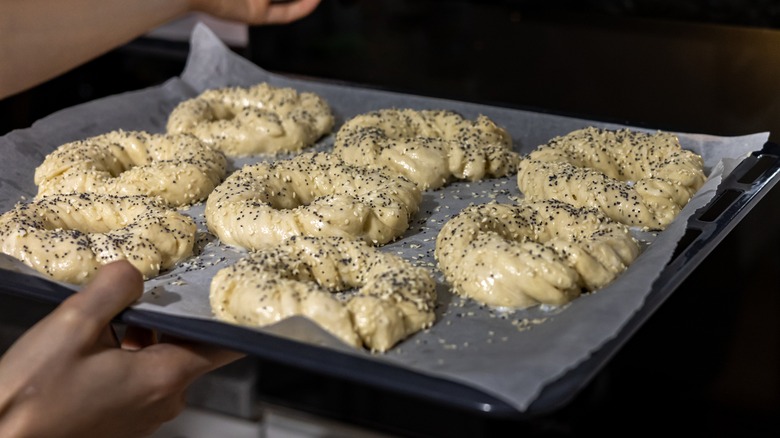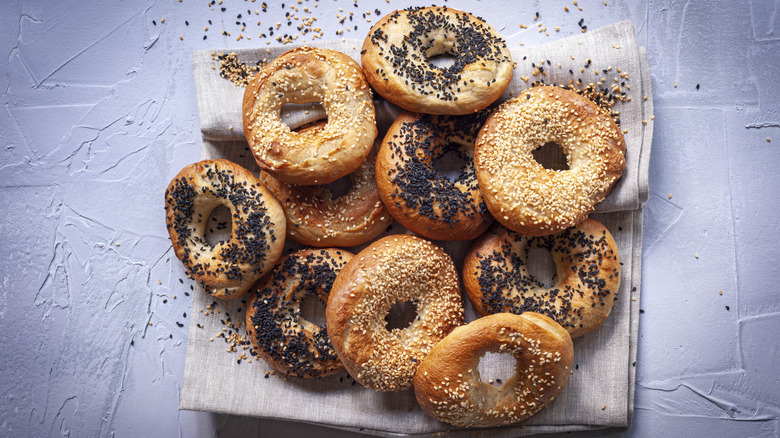The Oven Tip You Need For Making Bagels At Home
Making the perfect bagels from scratch can be intimidating. Any kind of baked good requires precision in the kitchen, but bagels in particular require a little TLC to turn out crisp, chewy, and just right. To figure out how to get bakery-quality results, we got some expert tips from Matt Pomerantz, the founder of Zucker's Bagels & Smoked Fish in New York. He says that it's crucial for home bakers to pay attention to their bagels. "Home ovens are different than our commercial-grade rotating ovens, so the key is to keep an eye on your bagels to make sure they're browning evenly," Pomerantz said. "You can rotate the pan halfway during baking to achieve this."
In addition to rotation, those commercial ovens also offer another advantage: They can reach up to 600 degrees Fahrenheit, which many bakers take advantage of. However, you can still achieve bagel greatness at temps that range from 425 to 500 degrees Fahrenheit. You can also try using a home pizza oven for higher heat, or DIY one like Julia Child. And don't forget to use the right pan — a perforated one is best, as it allows the hot air to circulate around the dough. If you don't have one, opt for using a wire rack placed on top of a sheet pan. Put your bagels right on top, and they'll brown for a beautiful blistered crust.
Bagel ingredient tips from an expert
Whether you're making a traditional recipe or a variation like the viral three-ingredient bagel, the quality of your ingredients always counts. "At Zucker's, we use natural flours that are unbromated and unbleached, which provide a great base of flavor," Matt Pomerantz said. "We sweeten our bagels with malt syrup for just a touch of sweetness — at home, you could try a small amount of honey as a substitute if you don't have malt syrup."
Unbleached flour will create a bagel that's not only far more flavorful, but also retains more nutrients than one made with bleached flour. Meanwhile, some bagel makers may opt to use bromated flour, which includes potassium bromate. While this flour makes it easier to achieve the classic taste and texture of a well-made bagel, the additive has been categorized as "possibly carcinogenic" by the International Agency for Research on Cancer. Its use is still allowed in most of the United States, but it has been banned in other countries, so use it at your own discretion.
Finally, while it may be a challenge to find malt syrup at your average grocery store, it can be worth the wait to have it shipped from an online retailer, since it helps to create the gorgeous golden-brown color of a bagel's shiny crust. However, if you can't wait to make your bagels, take Pomerantz's advice and use honey or even turn to brown sugar as a sweetener.


